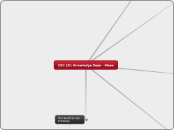arabera Akam Akam 12 years ago
531
CSC 101 Knowledge Base - Roger

arabera Akam Akam 12 years ago
531

Honelako gehiago
http://friedmasflattenersakam.blogspot.com/
Most personal computers today include a hard drive, some type of optical drive, a flash
memory card reader, and multiple USB ports that can be used to connect USB-based storage
devices, such as external hard drives and USB flash drives, as well as other USB hardware.
Remote storage involves using a storage device that is not directly connected to your computer.
One example is using a network storage device, such as a network attached storage
(NAS) or storage area network (SAN).
Flash memory is used in a variety of storage systems. Flash memory cards, one of the
most common types of flash memory media, are commonly used with digital cameras,
portable computers, and other portable devices, as well as with desktop computers.
Optical discs, such as CD discs, DVD discs, and Blu-ray Discs (BDs), store data optically
using laser beams, and they can store data much more densely than magnetic disks. They are
divided into tracks and sectors like magnetic disks, but they use a single spiral track instead
of concentric tracks.
Hard drives are used in most computers to store programs and data. Conventional hard
drives are magnetic hard drives; a newer type of hard drive that uses flash memory instead
of magnetic disks is the solid-state drive (SSD). Hard drives can be internal or external;
external hard drives can be full-sized or portable. Hybrid hard drives are a combination
of a magnetic hard drive and an SSD, containing a large amount of flash memory that
is used in conjunction with magnetic hard disks to provide increased performance while
reducing power consumption.
Storage systems make it possible to save programs, data, and processing results for later
use. They provide nonvolatile storage, so when the power is shut off, the data stored on
the storage medium remains intact.
There are several possible remedies for a computer that is performing too slowly, including
adding more memory, performing system maintenance to clean up the computer’s
hard drive, buying a larger or additional hard drive, and upgrading the computer’s Internet
connection or video card, depending on the primary role of the computer and where the
processing bottleneck appears to be. To make computers work faster overall, computer
designers have developed a number of strategies over the years, and researchers are continually
working on new strategies. Some of the strategies already being implemented include
improved architecture, pipelining, multiprocessing, parallel processing, and the use of
new or improved materials.
Most digital computers work in a two-state, or binary, fashion. It is convenient to think of
these binary states in terms of 0s and 1s. Computer people refer to these 0s and 1s as bits.
Converting data to these 0s and 1s is called digital data representation.
How processors are built
Personal computers typically contain a variety of hardware components located inside the
system unit. For instance, chips are mounted onto circuit boards, and those boards are positioned
in slots on the motherboard—the main circuit board for a computer. Every computer
has a central processing unit (CPU) or processor—also called a microprocessor when
referring to personal computers—attached to its motherboard that performs the processing
for the computer. CPU chips differ in many respects, such as what types of computer the CPU
is designed for, its clock speed, and word size. They can also be multi-core CPUs, such as
the dual-core (two cores) and quad-core (four cores) CPUs now available. Another difference
is the amount of cache memory—memory located on or very close to the CPU chip
to help speed up processing. Other important differences are the general architecture of the
CPU and the bus speed and width being used. The overall processing speed of the computer
determines its performance. One of the most consistent measurements of overall performance
is a benchmark test.
Memory refers
CPUs today include at least one arithmetic/logic unit (ALU), which performs integer
arithmetic and logical operations on data, and most include at least one floating point
unit (FPU), which performs decimal arithmetic. The control unit directs the flow of electronic
traffic between memory and the ALU/FPU and also between the CPU and input
and output devices. Registers—high-speed temporary holding places within the CPU that
hold program instructions and data immediately before and during processing—are used
to enhance the computer’s performance. The prefetch unit requests data and instructions
before or as they are needed, the decode unit decodes the instructions input into the CPU,
internal cache stores frequently used instructions and data, and the bus interface unit
allows the various parts of the CPU to communicate with each other.
Computers and devices based on related technology have become indispensable tools for
modern life, making ordinary tasks easier and quicker than ever before and helping make
today’s worker more productive than ever before.
Computer networks are used to connect individual computers and related devices so that
users can share hardware, software, and data as well as communicate with one another.
The Internet is a worldwide collection of networks.
Embedded computers are built into products (such as cars and household appliances)
to give them added functionality. Mobile devices are small devices with computing or
Internet capabilities; a mobile device based on a mobile phone is called a smartphone.
A computer is a programmable electronic device that accepts input; performs processing
operations; outputs the results; and provides storage for data, programs, or output when
needed. Most computers today also have communications capabilities. This progression
of input, processing, output, and storage is sometimes called the information processing
cycle.
Computers appear almost everywhere in today’s world, and most people need to use a
computer or a computerized device frequently on the job, at home, at school, or while
on the go. Computer literacy, which is being familiar with basic computer concepts,
helps individuals feel comfortable using computers and is a necessary skill for everyone
today.